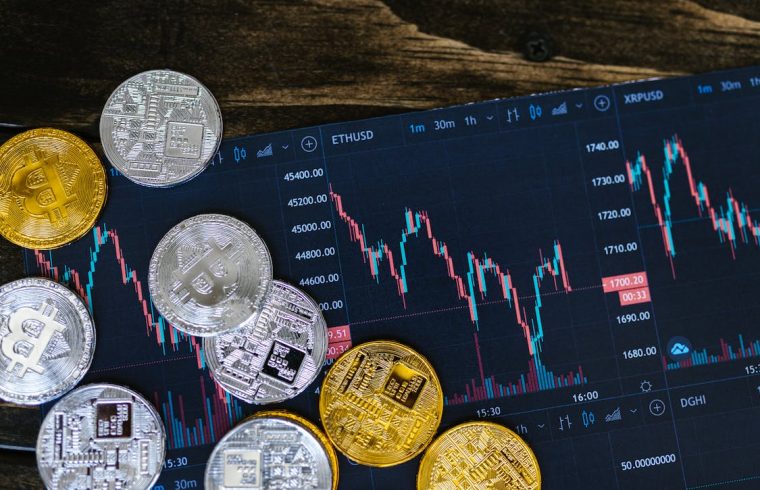“I always tried to turn every disaster into an opportunity,” John D Rockefeller said this in the early 20th century, to circumvent the obstacles that he was facing to become the richest man in the world. A hundred years later, today, there are more opportunities to scale up a business idea into a successful venture. FTX was started on the same principle, finding an opportunity in the volatile crypto market, to help the common man transact digitally. People could trade over 300 cryptocurrencies on their platform. Little did they know that this opportunity was going to turn into a disaster.
FTX founder Sam Bankman-Fried, popularly known as SBF on his social media, a charming 30-year-old, has become a global news overnight as he stepped down from his CEO post and his popular platform FTX, valued at 32 billion US dollars, filed for Chapter 11 bankruptcy on November 11, just a few days ago. Chapter 11 bankruptcy allows for the debtors to reorganize and plan properly to ensure that their company remains alive, and the creditors are paid back over time.
Turn of Events
The story of this disaster starts began a few years back, with SBF starting a company Alameda Research in October of 2017. CEO of Alameda Research is Caroline Eillson, who is also the ex-girlfriend of SBF. It is said that she has equal responsibility, if not more for this disaster. Alameda is a quantitative trading private equity firm enabling traders to trade in cryptocurrency, based on strategies developed using quantitative models and algorithms. Next, SBF went on to start FTX in May of 2019, a cryptocurrency exchange platform, headquartered in the Bahamas. With a sharp growth in his income his popularity also grew. SBF was called as the “Crypto saviour” when the market prices fell earlier this year by facilitating deals worth a billion US dollars to protect the struggling companies. In the recent electoral campaigns also, SBF donated funds to both the Democrats and Republicans in their pursuit of continuing to stay in power.
It took all but 10 days for the decacorn company to plunge into bankruptcy. Decacons are companies whose valuation is greater than 10 billion US dollars. For a startup to become successful is commendable, but growing and competing at the top of the table another story all together. On November 2nd, CoinDesk, came out with an exclusive report, with the help of a leaked balance sheet document from Alameda Research, stating that almost all of Alameda’s assets were in the form of FTT tokens, the native token of FTX. SBF also owned 5 billion US dollars’ worth tokens in Alameda. This report prompted many customers to withdraw their investments, approximately to the tune of 6 billion US dollars. SBF tried to convey to his investors through his social media handle that the company’s assets were stable, but it was hard to believe. Over the next few days, SBF tried to find money to pay off his customers’ withdrawal requests. On November 8th, Binance announced that it had come to an agreement with FTX to bail them out.
The next part of the story is the rivalry between Binance and FTX. Binance is the biggest crypto-exchange platform started in the same year as FTX. Both the companies had been in fierce rivalry over the past 5 years, with Binance even owning FTT tokens worth 529 million US dollars. After agreeing to bail out FTX on November 8th for an undisclosed amount, the very next day Binance after announcing that there were corporate due diligence concerns regarding how the customers’ funds were being handled by FTX.
This was the final nail in coffin for SBF and FTX. On November 10th the Securities regulator in Bahamas froze all the assets under FTX in the Bahamas and simultaneously the California Dept. of Financial Protection and Innovation opened an investigation against FTX. SBF went social again, and tweeted a string of announcements, FTX didn’t have sufficient funds to fulfil the withdrawal requests, that it was a “poor internal labelling” issue that caused miscalculations on leverage and liquidity with FTX, and ended the thread by stating that even Alameda Research was winding up their business. The next day, on November 11th SBF stepped down as the CEO, and gave the reigns of control to John Jay Ray III, whom people recognize through the crisis of Enron.
Repercussions
1. FTX and Alameda Research:
As the buyout deal with Binance failed, FTX that was valued at about $32 Billion in september’22 filed for Bankruptcy on November 11th along with Alameda Research and the personal net worth of SBF toppled from $26 Billion to nearly zero. Both SBF and Caroline Ellison his ex-girlfriend will be facing jail terms for committing fraudulent activities. FTX owes about $3.1 Billion USD to top 50 creditors.
2. Local traders and Investors:
When Binance started to sell $2.1 Billon USD of FTT tokens, small time investors and traders using FTX platform started to withdraw money from their trading accounts. FTX processed withdrawals worth $4 Billion USD which ballooned to $6 Billion on November 8th, since FTX didn’t have enough liquidity to process these withdrawals, much of the investors and traders’ money was frozen. The US Securities and Exchange Council and Department of Justice have refrained new investors and traders from indulging in any business activities with FTX. Some of the prominent private equity and Ventures capitalists’ funds have written off their investments in FTX as losses. Sequoia Capital has written of their $210 Million USD investment in FTX as losses while pension giant Ontario Teachers Plan has written off their $95 Million USD as potential losses.
3. Global Crypto Markets:
The fall of FTX, sent shockwaves across the global crypto market. The overall valuation of the global crypto market tumbled by almost 20% from $1.02 Trillion USD to $824 Billion USD.
From India’s perspective, popular Indian crypto trading firms viz. WazirX, Zebpay, etc. saw a sharp fall in their trading volumes. Other crypto trading platforms like Binance, Kraken3 have assured their investors of their strong liquidity positions.
4. Other Cryptos:
Over $150 Billion USD, this is the value that the top 15 crypto currencies including Bitcoin, Ethereum, Solana, etc. lost in market value. The value of FTT token fell by almost 80% in a matter of 3 days after Binance sold off their stake in FTX. Multicoin capital one of the top crypto venture firms said that many of the trading firm will be wiped out or shut down in coming weeks amid the collapse of FTX.
Conclusion
As SBF and Caroline Ellison face uncertainty about their future, it makes us to think about how they could have done things differently to keep the opportunity intact for people to trade without having to worry about a disaster ensuing.
Since this disaster came to light, other companies in this universe are running concerned. BlockFi, a crypto lending firm has temporarily stopped customer withdrawals and there are rumours that they might not have a long and bright future as well. Similarly, Genesis Global Capital has also stopped its withdrawal requests, indicating that the worst may not be over yet for the crypto market yet.
It begs us to ask so many questions, how can such a big case of corporate governance failure go unnoticed? whether or not cryptos are safe to invest? And till how long will this market be functioning unregulated?
Till the time these questions are answered, our advice to the readers is be watchful and keep yourself updated, understand the business and the risks associated, yourself first, before you start investing and like Rockefeller said, find the right opportunities from disasters as well.
– Arunkumar Iyer
Gopika Reghu
Bhagirath Ramesh











